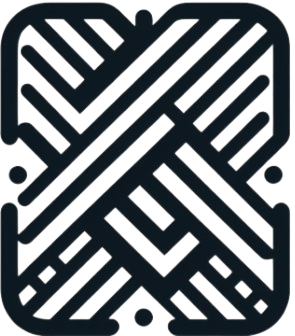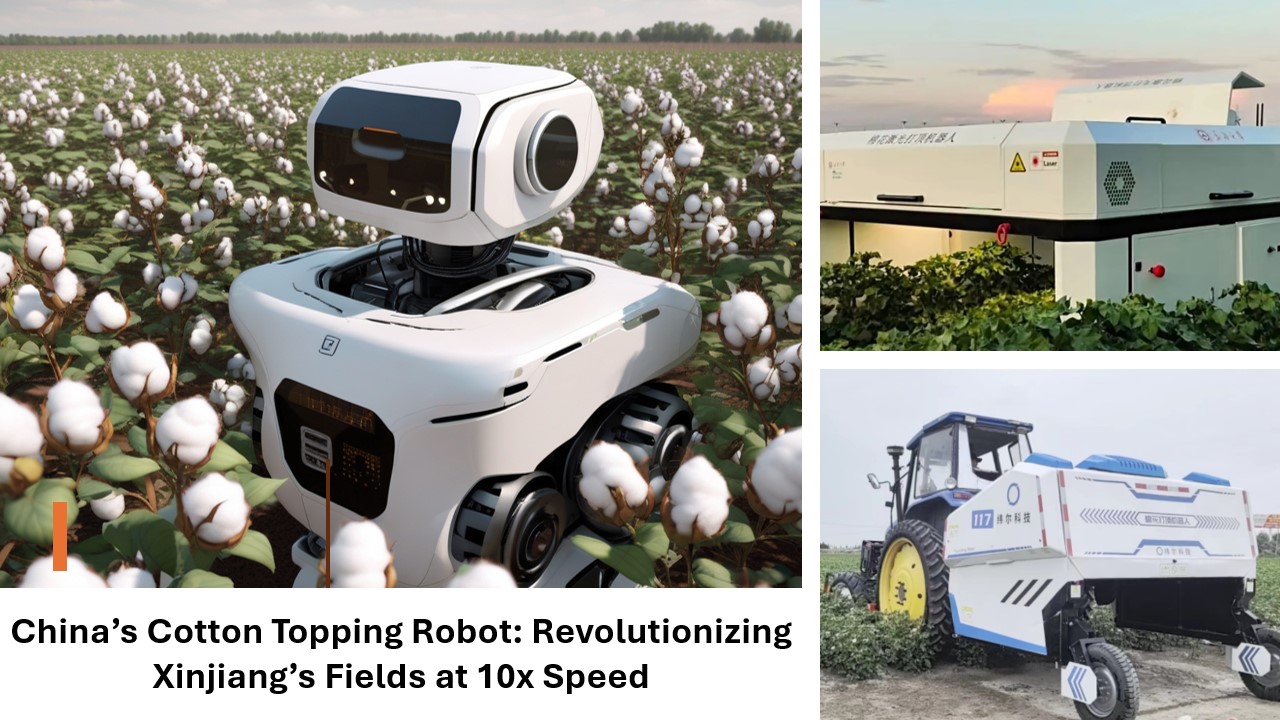Introduction
China has unveiled a groundbreaking advancement in agricultural technology: the world’s first fully automated cotton topping robot. Developed in Xinjiang, this robot promises to transform one of the most labor-intensive phases of cotton cultivation by replacing manual topping with a high-precision, laser-powered, intelligent system—delivering results at ten times the speed of human workers.
The Challenge of Cotton Topping
Cotton topping involves removing the plant’s top bud to redirect nutrients to lateral branches, boosting boll formation and yield. Traditionally, this process has been:
- Labor-intensive: Required large numbers of seasonal workers.
- Time-consuming: Manual topping is slow, inefficient, and prone to inconsistency.
- Physically demanding: Workers must bend and reach for hours in hot fields, leading to fatigue and potential errors.
The Technology Behind the Robot
The new robot was developed through a collaboration between Xinjiang University and EAVision Robotic Technologies. Key features include:
- Laser Topping: Uses a high-powered blue laser to vaporize the terminal bud without touching the plant, ensuring non-contact, non-damaging operation.
- Solid-State LiDAR & Machine Vision: Advanced sensors and AI-driven vision systems allow the robot to identify and target the correct bud, even as plants sway in the wind.
- Precision & Efficiency: Achieves 98.9% accuracy in bud detection, with less than 3% plant damage and over 82% topping success rate in field trials.
- Speed: Processes 0.4–0.53 hectares per hour, making it at least 10 times faster than manual labor.
Field Deployment and Impact
- First Large-Scale Trials: The robot has been deployed in demonstration bases across Xinjiang, a region responsible for 90% of China’s cotton production.
- Scalability: The technology is being promoted for large-scale use, with operation orders covering thousands of hectares.
- Around-the-Clock Operation: Robots can work day and night, unaffected by weather or fatigue, further increasing productivity.
- Economic Benefits: By automating topping, farmers save on labor costs and can expect higher yields due to more precise nutrient management.
Comparison: Manual vs. Robotic Topping
Broader Significance
This innovation marks a major step toward fully mechanized cotton farming in China. It addresses labor shortages, reduces production costs, and supports sustainable agriculture by minimizing plant damage and chemical use. The robot’s success also highlights China’s rapid progress in smart farming and its commitment to modernizing traditional industries.
Conclusion
China’s cotton topping robot is not just a technological marvel—it’s a game changer for the global cotton industry. By fully automating a once laborious task at unprecedented speed and accuracy, it sets a new standard for agricultural efficiency and sustainability.
References
- China’s new cotton topping robot fully automates laborious task at 10x speed | The Times Of Innovations
- China’s cotton topping robot promises fully automated production of Xinjiang crop | South China Morning Post
- The world’s first cotton laser topping robot successfully developed in China’s Xinjiang-China Xinjiang
- The world’s first cotton laser topping robot successfully developed in China’s Xinjiang-China Xinjiang
- The world’s first cotton laser topping robot successfully developed in China’s Xinjiang – Global Times
- China’s cotton topping robot promises fully automated production of Xinjiang crop | South China Morning Post
- Intelligent cotton topping robots busy working at cotton fields in NW China’s Xinjiang-TIANSHANNET-天山网
Read More
- Smart Garments for Elderly Health Monitoring and Active Living
- Call for Submissions: Share Your Expertise in Textile and Apparel
- Redesigning the Breath of Life: A Next-Gen N95 That Filters More Than Air
- History and Development of Suture
- Different Blending methods with their advantages and disadvantages
- The methods of measuring the thermal insulation and water vapor permeability of fabrics
- Six Sigma: A Comprehensive Guide to Process Excellence
- Transforming Textiles with Nanotechnology: Applications and Advances
- The Science and Innovation Behind Waterproof Breathable Fabrics
- Classification of Protective Textiles

